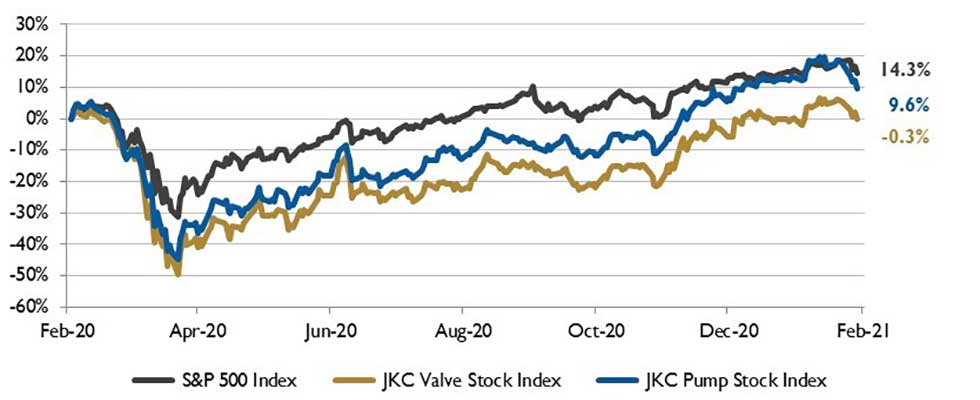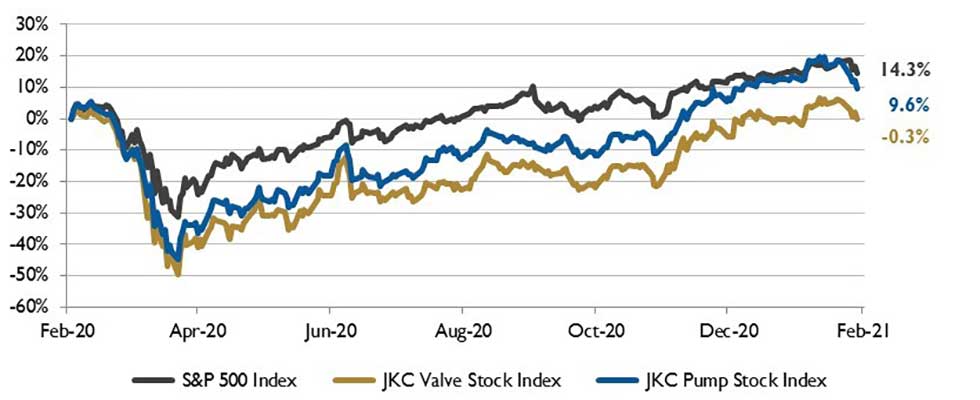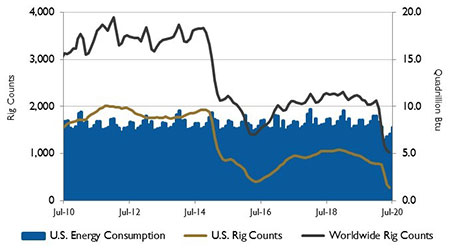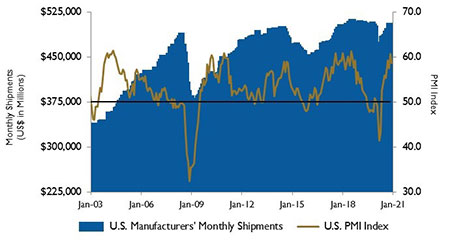
The Jordan, Knauff & Company (JKC) Valve Stock Index was down 0.3% over the last 12 months, while the broader S&P 500 Index was up 14.3%. The JKC Pump Stock Index gained 9.6% for the same time period.1
The Institute for Supply Management’s Purchasing Managers’ Index (PMI) fell to 58.7% in January from 60.7% in December. New orders were down 6.4 points to 61.1% and current production was down 4.0 points to 60.7%. Ongoing supply disruptions kept order backlogs rising, as the backlogs index hit a two-and-a-half-year high.

The employment index rose to 52.6%, the highest reading since the pandemic and a sign manufacturers are growing more confident. Manufacturing employment remains 543,000 lower than in February 2020. The prices paid component rose to the highest level since 2011, with many inputs ranging from raw materials to shipping costs rising over the month.
According to the Labor Department, United States employers added 49,000 jobs in January, returning growth to the labor market after payrolls fell steeply in December, the first decline since the coronavirus pandemic triggered business shutdowns last spring. Jobs grew strongly in business and professional services. The private sector added 6,000 jobs in January, while the rest of the increase came from jobs added in public education and government. The leisure and hospitality sector lost 61,000 jobs in January, following a steep decline of 536,000 in December. Retailers, healthcare companies and warehouses cut jobs in January. Positive areas included manufacturing, with companies reporting increased demand for goods and new hiring, and housing, where low interest rates and the pandemic have boosted demand. Since February 2020, the economy is still down 9.9 million jobs.

U.S. gross domestic product (GDP) grew at an annualized rate of 4.0% in the fourth quarter of 2020. Most major spending components posted gains. Fixed investment spending rose 18.4%, and real exports of goods and services climbed 22.0%.
Global demand for petroleum products fell significantly in 2020. The U.S. Energy Information Administration (EIA) estimates that the world consumed 92.2 million barrels per day (b/d) of petroleum and other liquid fuels last year, down by 9.0 million b/d from 2019.

This is the largest percentage decline in the EIA’s records dating back to 1980. The EIA expects global liquid fuels consumption will grow by 5.6 million b/d in 2021 and 3.3 million b/d in 2022.
The Dow Jones Industrial Average and the S&P 500 Index fell 2.0% and 1.1%, respectively. The NASDAQ Composite gained 1.4% for the month of January.
Investors worried about rising cases of coronavirus and the slowness of the vaccine rollout in the U.S.
Reference
1. The S&P Return figures are provided by Capital IQ.
These materials were prepared for informational purposes from sources that are believed to be reliable but which could change without notice. Jordan, Knauff & Company and Pumps & Systems shall not in any way be liable for claims relating to these materials and makes no warranties, express or implied, or representations as to their accuracy or completeness or for errors or omissions contained herein. This information is not intended to be construed as tax, legal or investment advice. These materials do not constitute an offer to buy or sell any financial security or participate in any investment offering or deployment of capital.

